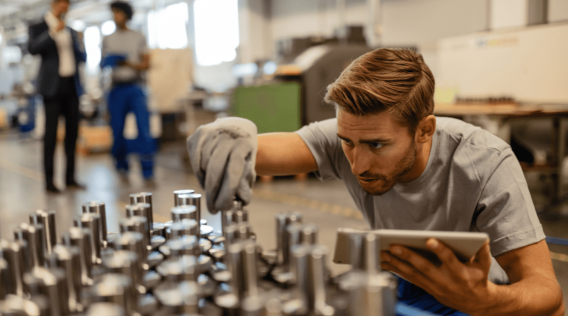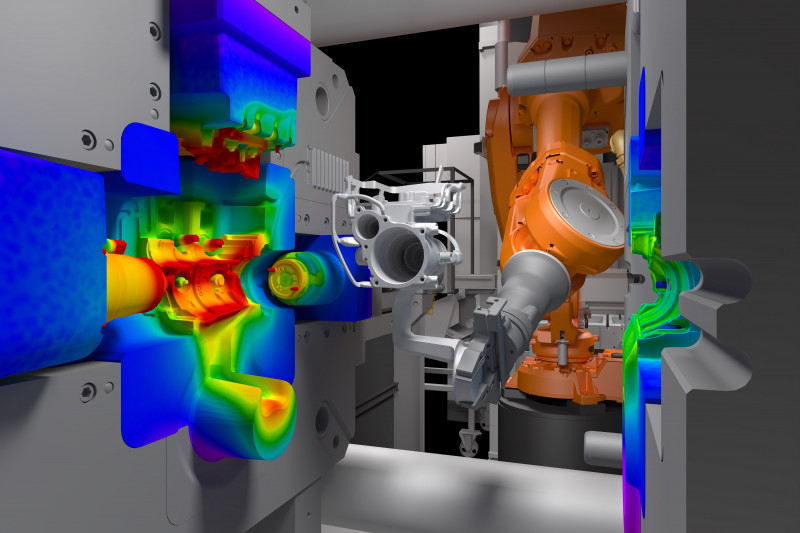Die casting is a widely used method for producing high-quality metal parts with excellent dimensional accuracy and surface finish. It involves injecting molten metal into a mold under high pressure, followed by solidification and ejection of the part from the mold. The mold used in die casting plays a crucial role in determining the final product’s precision and efficiency.
Die casting molds, also known as dies, are made from hardened tool steel and consist of two halves: the cover die and the ejector die. These two halves are precisely machined to form a cavity that matches the shape and size of the desired part. The cover die is mounted to the stationary platen of the die casting machine, while the ejector die is attached to the moving platen.
The precision of die casting molds is achieved through a meticulous design and manufacturing process. Computer-aided design (CAD) software is used to create a detailed 3D model of the part, which serves as a basis for designing the mold. The mold designer determines the number and location of the parting lines, the gating system, and the cooling channels. The parting lines are the surfaces where the two halves of the mold meet and where the part will be separated after casting. The gating system consists of the sprue, runners, and gates, which allow the molten metal to flow into the cavity. The cooling channels help regulate the temperature of the mold during the casting process, ensuring proper solidification and reducing cycle time.
Once the mold design is finalized, the mold manufacturer begins the production of the dies. The first step is to machine the steel blocks to create the mold’s main features, such as the cavity, cores, and cooling channels. This is done using advanced CNC machines that can accurately remove material according to the design specifications. The next step is to heat-treat the mold to increase its hardness and durability, followed by additional machining operations to achieve the desired surface finish. Finally, the mold is polished and fitted with inserts, such as ejector pins and slides, which assist in the ejection of the part.
The efficiency of die casting molds is crucial for achieving high productivity and cost-effectiveness in the manufacturing process. One key factor that affects efficiency is the mold’s lifespan. A well-designed and properly maintained mold can produce thousands or even millions of parts before requiring repair or replacement. Regular maintenance, including cleaning, lubrication, and inspection, is necessary to prevent wear and damage to the mold.
Another factor that influences efficiency is the cycle time, which is the time required to complete one casting cycle, including filling, solidification, and ejection. The design of the mold, particularly the gating system and cooling channels, can significantly affect the cycle time. A well-designed gating system allows for efficient filling of the cavity, minimizing turbulence and air entrapment. Proper cooling channel design ensures uniform cooling of the part, reducing the risk of defects and shortening the solidification time.

Advancements in mold-making technology, such as the use of simulation software and additive manufacturing techniques, have further improved the precision and efficiency of die casting molds. Simulation software allows mold designers to analyze and optimize the mold’s performance before production, reducing the need for costly and time-consuming trial and error. Additive manufacturing, or 3D printing, enables the production of complex mold features with high precision and shorter lead times.
In conclusion, die casting molds are essential for achieving precision and efficiency in metal casting. Their meticulous design and manufacturing process, as well as regular maintenance, ensure high-quality parts and extended mold lifespan. The continuous advancements in mold-making technology further enhance the precision and efficiency of die casting molds, contributing to the success of the die casting industry.
-

- 마그네슘 합금 주조 부품 자전거 프레임 CNC 가공 및 표면 마무리
-

- High precision magnesium alloy die casting parts for automotive ignition lock
-

- 3 ~ 5 세 12 인치 키즈 사이클 OEM을위한 도매 마그네슘 합금 베이비 사이클 저렴한
-

- macbook 중간의 OEM 다이 캐스팅 서비스 금속 부품
-

- 공장 사용자 정의 중국 Bmx 사이클 도로 스포츠 어린이 자전거 12 16 18 20 인치 사이클 Mtb 어린이 6-10 년
-

- Magnesium alloy die-casting Auto parts Front bumper Anti-collision beam

 0086-750-5616188
0086-750-5616188 +86 13392089688
+86 13392089688 sales@zhongmei-tech.com
sales@zhongmei-tech.com







